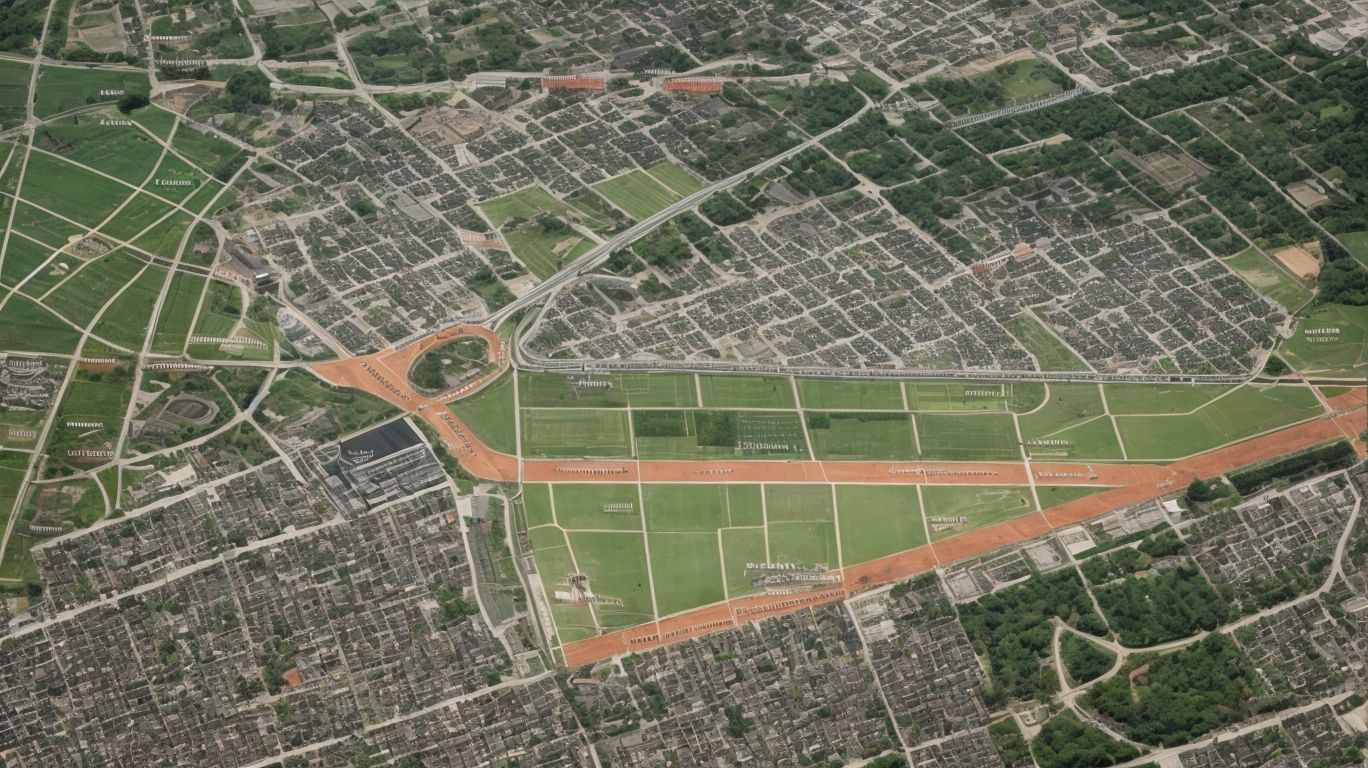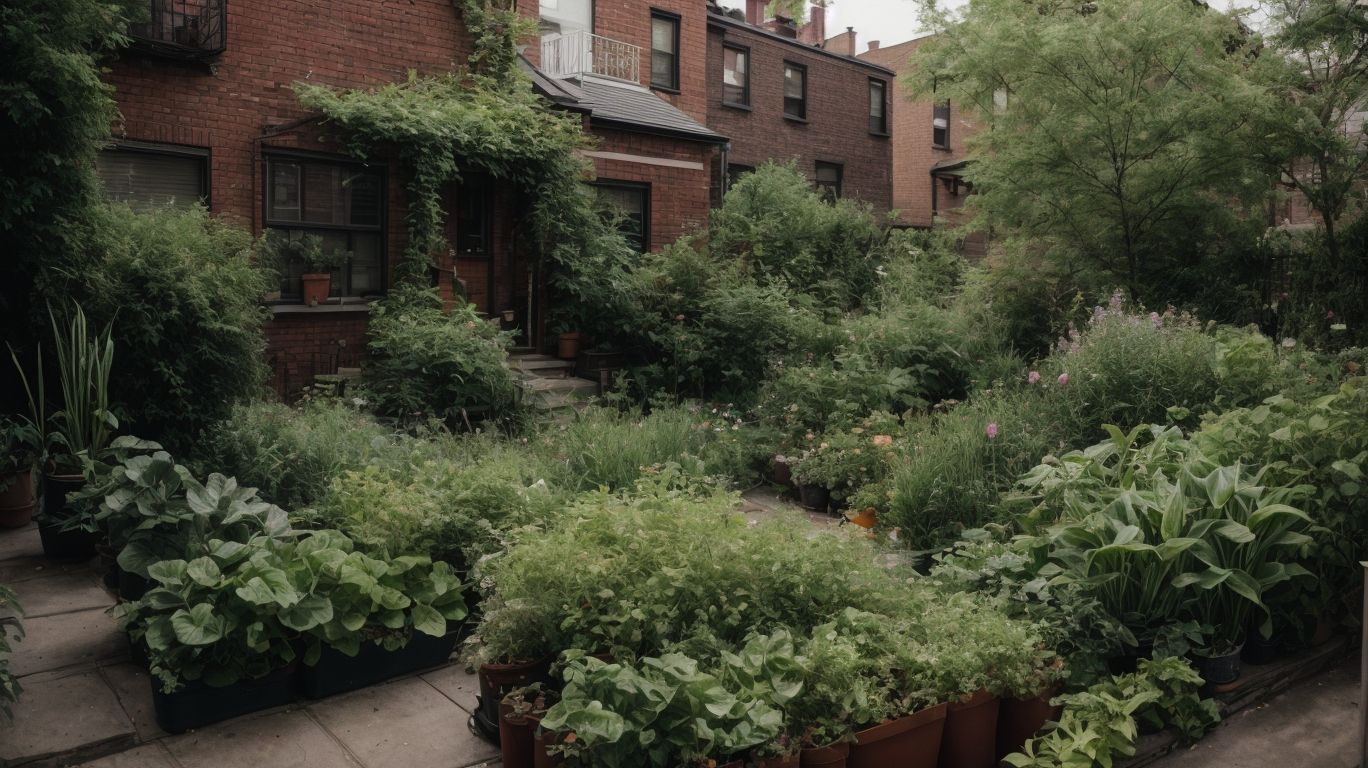Are you ready to unlock the secrets of gardening success in Zone 98550? Understanding your gardening zone is the key to cultivating a thriving and bountiful garden. In this comprehensive guide, we will explore what exactly a gardening zone is and how it is determined. Discover the unique characteristics and climate factors that define Zone 98550, and learn which plants, vegetables, flowers, trees, and shrubs are best suited for this specific zone. Uncover the challenges and common pests and diseases that gardeners face in Zone 98550, and gain valuable insights into how to overcome them. Plus, we’ll provide you with practical tips and resources to help you maximize your gardening efforts and protect your plants in this particular zone. Whether you’re a seasoned gardener or just starting out, this article will equip you with the knowledge and tools you need to thrive in gardening Zone 98550.
Key Takeaways:
What Is a Gardening Zone?
A gardening zone, also known as a plant hardiness zone, is a defined geographic area that informs gardeners and plant enthusiasts about the specific climatic conditions and temperature ranges suitable for various plants.
Understanding gardening zones is crucial for selecting and cultivating plants in a way that maximizes their growth and health. The United States Department of Agriculture (USDA) created the USDA Hardiness Zone Map, which divides North America into 13 different planting zones based on average annual minimum winter temperatures. This system helps gardeners identify the types of plants that are most likely to thrive in their specific region.
For instance, if a gardener knows that their area is in Zone 8, they can refer to plant descriptions that provide guidance on the minimum temperature requirements for each plant. This allows them to make informed decisions about which plants to add to their garden based on their likelihood of surviving the winter conditions.
How Are Gardening Zones Determined?
Gardening zones are determined based on a range of factors, including climate data, ecoregion characteristics, and local temperature patterns, with specific considerations for regions like Island County, Washington.
USDA data plays a crucial role in defining these zones, as it provides comprehensive information on average minimum winter temperatures. For instance, Island County, Washington, falls within USDA Zone 8, reflecting its unique temperature range and climate conditions. Regional climate variations, such as maritime influence in coastal areas, further delineate the specific gardening potential within these zones. Local temperature dynamics, influenced by factors like elevation and proximity to water bodies, also impact the microclimates within each zone, offering a diverse array of suitable plants and cultivation practices.
What Is the Gardening Zone for 98550?
The gardening zone for the zip code 98550 can be identified using the Hardiness Zone Map, which provides interactive instructions for locating the specific zone based on the given zip code.
To determine the gardening zone using the Hardiness Zone Map, start by locating the interactive map on the website or using a printed version if available.
Enter the 98550 zip code in the search bar or zoom in on the map to find the area. The specific gardening zone for 98550 will be indicated by color-coding or a key provided on the map.
This way, gardeners can easily identify the appropriate plants and planting times suitable for their location.
What Are the Characteristics of Gardening Zone 98550?
Gardening Zone 98550, which encompasses the Hoquiam area in Washington, exhibits unique characteristics influenced by the local terrain, Sunset Books, and data from the University of California.
Located in the Pacific Northwest, Gardening Zone 98550 reflects the moderate maritime climate prevalent in the region, which plays a vital role in determining the plant hardiness and cultivation options. The USDA classifications segregate this zone as Zone 8b, showcasing its suitability for a diverse range of flora that thrive in mild winters and moderately warm summers.
The influence of Sunset Books’ comprehensive climate data is evident in the selection of Gardening Zone 98550’s recommended plants and landscaping techniques. The precise mapping and analysis provided by the University of California’s research contribute to the in-depth understanding of the microclimates and ecological nuances within the zone, guiding local gardeners with essential knowledge for successful cultivation.
What Plants Grow Best in Gardening Zone 98550?

Credits: Monkinthegarden.Com – Jerry Thompson
The plants that grow best in Gardening Zone 98550, encompassing areas like Puget Sound, are carefully selected based on recommendations from the WSU Extension and insights from experienced gardeners familiar with the local climate and soil conditions.
Plant selection for Gardening Zone 98550, which covers regions around Puget Sound, is heavily influenced by the unique environmental conditions that characterize the area. The cool, moist climate and acidic soils prevalent near Puget Sound demand specific criteria for plant suitability. Local gardeners, with their firsthand experience, play a crucial role in recommending plants that thrive in these conditions. Utilizing the expertise of WSU Extension, gardeners can access comprehensive information and research-backed recommendations specifically tailored to the challenges and opportunities presented by Puget Sound’s microclimates. This collaborative approach helps in ensuring that the selected plants are well-adapted to the region’s specific environment.”
What Are the Recommended Vegetables for Gardening Zone 98550?
In Gardening Zone 98550, specific vegetables recommended for cultivation are determined by factors such as the length of the growing season, annual temperatures, and insights from resources like Hortsense fact sheets.
Considering the unique climate of Gardening Zone 98550, it is important to select vegetables that can thrive in the specific conditions. With a relatively short growing season and fluctuating annual temperatures, hardy vegetables such as carrots, spinach, kale, and broccoli tend to perform well.
The Hortsense fact sheets provide essential information on the suitability of various vegetables for this zone, helping gardeners make informed choices for a successful harvest.
What Are the Best Flowers for Gardening Zone 98550?
The best flowers for Gardening Zone 98550 are selected based on considerations such as local rainfall patterns, temperature tolerances, and insights from resources like the Sunset Western Garden Book, tailored to the specific conditions of the zone.
When choosing flowers for Gardening Zone 98550, it is crucial to opt for plants that can thrive in the unique climate and environmental conditions of the area. Some popular choices for this specific zone include drought-tolerant varieties like Lavender and Gaillardia, which can withstand the characteristic dry periods in the region. Perennials such as Penstemon and Salvia are well-suited for the varied temperature fluctuations in the zone, making them reliable options for long-term garden success.
What Are the Ideal Trees and Shrubs for Gardening Zone 98550?
The ideal trees and shrubs for Gardening Zone 98550 are carefully chosen based on factors such as frost dates, soil adaptability, and recommendations from the WSU Extension, ensuring suitability for the unique climate and growing conditions in the zone.
Species like the Pacific dogwood, Western red cedar, and Oregon grape are favored for their ability to thrive in the zone’s frost dates. These indigenous selections have developed natural defenses against the local cold snaps, making them resilient choices for the area.
In terms of soil preferences, salal, red alder, and vine maple are well-suited to the acidic soils found in Gardening Zone 98550, ensuring their successful growth. Insights from the WSU Extension further endorse the snowberry, chokecherry, and serviceberry as reliable choices, enhancing the diversity and adaptability of plantings in the area.
What Are the Challenges of Gardening in Zone 98550?
Gardening in Zone 98550 presents challenges related to climate factors, including considerations for drought conditions, heat zone classifications, and potential plant problems specific to the region.
The arid climate of Zone 98550 can make it difficult to maintain optimal soil moisture levels for plant growth, especially during extended periods of little or no rainfall. Heat zone classifications become crucial in selecting heat-tolerant plant varieties that can thrive in the high temperatures of the region. Common plant problems such as fungal diseases, pests, and sunburn may also require particular attention and preventive measures in this climate.
What Are the Common Pests and Diseases in Gardening Zone 98550?
Identifying common pests and diseases in Gardening Zone 98550 is crucial for effective pest management and prevention strategies, tailored to the specific conditions and plant varieties within the zone.
In Gardening Zone 98550, gardeners often encounter:
- aphids
- spider mites
- powdery mildew
which can severely affect the health of plants. Understanding the lifecycle and behavior of these pests is essential for implementing targeted control measures. It’s important to regularly inspect plants for early signs of disease, as common issues such as:
- root rot
- leaf spot
- bacterial blight
can quickly escalate if left unchecked. By applying organic insecticidal soaps and neem oil, and practicing proper sanitation, gardeners can mitigate the impact of these pests and diseases in their gardening endeavors.
What Are the Climate Factors to Consider in Gardening Zone 98550?
Several critical climate factors need to be considered in Gardening Zone 98550, including variations in rainfall patterns, temperature ranges, latitude, and elevation, influencing the overall cultivation and plant care practices.
The rainfall patterns play a crucial role in determining the types of plants that can thrive in Gardening Zone 98550. Adequate rainfall is essential for sustaining plant growth and ensuring a healthy ecosystem.
The temperature ranges directly impact the types of flora that can flourish in the area. Understanding the specific latitude of the zone aids in selecting plants suited to its unique day length and seasonal changes.
The elevation of the region influences the microclimates and soil composition, affecting the choice of suitable gardening techniques and plant varieties.
How Can Gardeners Be Successful in Zone 98550?
Achieving success in Zone 98550 requires gardeners to implement tailored tips and plant care strategies, considering the nuances of the local terrain, unique growing season, and specific plant requirements within the zone.
Understanding the soil composition and drainage in Zone 98550 is crucial for selecting the right plants and ensuring their optimal growth. For sandy or clay-heavy soils, amending with organic matter can improve fertility and drainage, contributing to healthy plant development. Embracing the extended growing season in the zone allows gardeners to experiment with successive plantings, extending the harvest period and maximizing yield.
What Are the Tips for Gardening in Zone 98550?
Gardening in Zone 98550 can be optimized with expert tips covering various aspects such as soil preparation, pruning techniques, and efficient watering schedules tailored to the specific needs of the zone.
For soil preparation, it’s essential to understand the unique characteristics of the soil in Zone 98550. Conduct a soil test to determine its pH level and nutrient composition. Based on the results, amend the soil with organic matter to improve its structure and fertility.
In terms of pruning, consider the climate of the zone and the specific growth patterns of the plants. By following proper pruning methods, you can promote healthy growth and flowering.
As for watering, adjust the frequency and amount based on the local climate and the moisture retention capacity of the soil to ensure that plants receive adequate hydration.
How Can Gardeners Protect Their Plants in Zone 98550?
Protecting plants in Zone 98550 requires effective measures for frost protection, pest control, and insights from resources like the Sunset Books, offering valuable guidance for safeguarding the plants within the zone.
In terms of frost protection, Zone 98550 benefits from employing techniques such as using frost cloth or row covers, and mulching to retain soil heat. Grouping plants and covering them with plastic containers can provide insulation against the cold. To tackle pests effectively, natural predators like ladybugs and lacewings can be introduced to the garden ecosystem, while using organic insecticides and practicing crop rotation can help in keeping the pest population in check.
Sunset Books are a great resource for plant protection, providing comprehensive information on plant-specific care, soil management, and integrated pest and disease control, tailored to the unique climate and conditions of Zone 98550.
What Are the Resources Available for Gardeners in Zone 98550?
Gardeners in Zone 98550 have access to a range of resources, including national, regional, and state-specific map downloads, updates, and latest edition releases, tailored to the unique gardening needs within the zone.
These resources provide comprehensive information on the specific climate, soil types, and indigenous plant species of Zone 98550, enabling gardeners to make informed decisions about plant selection and care.
National maps offer insights into broader weather patterns, while regional and state-specific maps provide detailed localized data, allowing gardeners to plan and manage their gardens effectively.
Frequently Asked Questions
What is the gardening zone for 98550 and why is it important?
The gardening zone for 98550 is zone 8a, which is determined by the USDA Plant Hardiness Zone Map. It is important because it helps gardeners determine which plants are suitable to grow in their region.
How do I find out the gardening zone for my specific location?
You can find out the gardening zone for your specific location by using the interactive USDA Plant Hardiness Zone Map. Simply enter your zip code and it will reveal your gardening zone.
What types of plants are suitable for gardening in zone 8a?
Zone 8a is suitable for a wide variety of plants including fruits, vegetables, flowers, and trees. Some popular options include peaches, blueberries, tulips, and oak trees.
Can I grow plants from other gardening zones in 98550?
It is not recommended to grow plants from vastly different gardening zones in 98550. It is best to stick to plants that are suitable for zone 8a to ensure their success and health.
Are there any special considerations for gardening in zone 8a?
Yes, there are some special considerations for gardening in zone 8a. This zone has hot summers and mild winters, so it is important to choose plants that can tolerate these temperature fluctuations.
Can the gardening zone for 98550 change?
Yes, the gardening zone for 98550 can change over time due to factors such as climate change. It is important to regularly check for updates to the USDA Plant Hardiness Zone Map to ensure accurate information.


